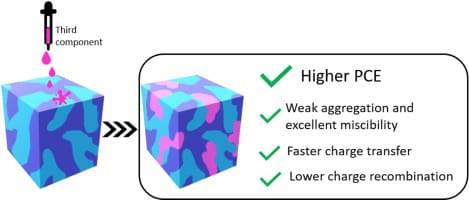Insights into charge dynamics and recombination processes in ternary organic solar cells through photophysical characterization techniques
The incorporation of a third component in organic solar cells (OSCs), the so-called ternary OSCs, has given rise to an increase in the power conversion efficiencies of the devices. This improvement has been assigned to the broadening of the absorption spectrum, the tuning of the energy levels, and positive changes in the morphology of the active layer, resulting in remarkable power conversion efficiencies (PCE) of up to 20.2 %. Current research highlights the crucial role of morphology in enhancing device performance. However, achieving higher efficiencies requires improved charge dissociation, balanced charge transport, and minimized energy loss and recombination, which is not always attained. This review describes the most common steady-state techniques, such as photoluminescence, and advanced transient techniques, such as transient photovoltage and transient absorption spectroscopy, to gain insights into the photovoltaic charge dynamic processes to contribute to the improvement of the performance of TOSCs.

Mendez, M.; Sanchez, J. G.; Martinez-Ferrero, E.; Palomares, E. J.
Curr. Opin. Colloid Interface Sci. 2024,
DOI:
10.1016/j.cocis.2024.101865

Let's create a brighter future
Join our team to work with renowned researchers, tackle groundbreaking
projects and contribute to meaningful scientific advancements



















